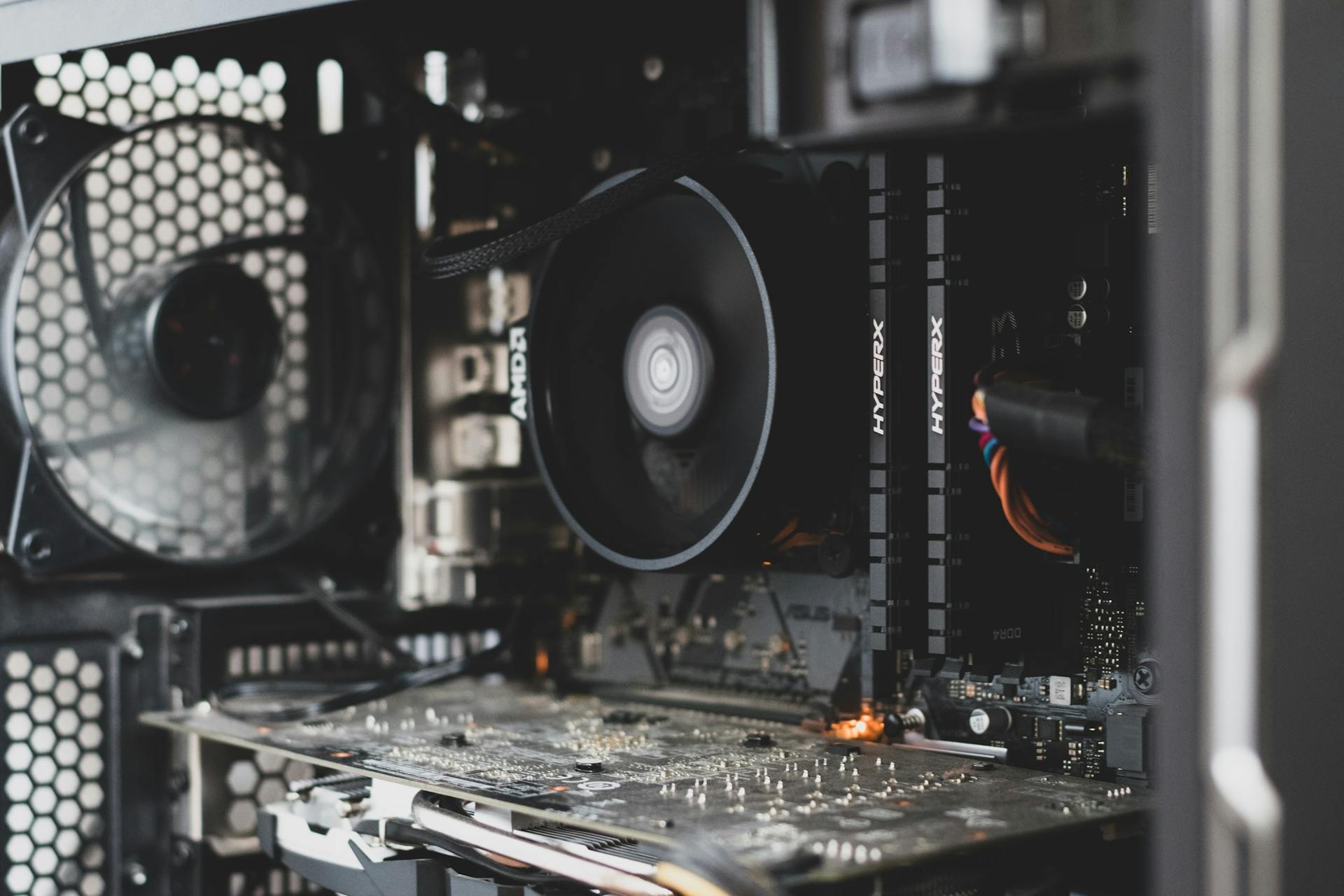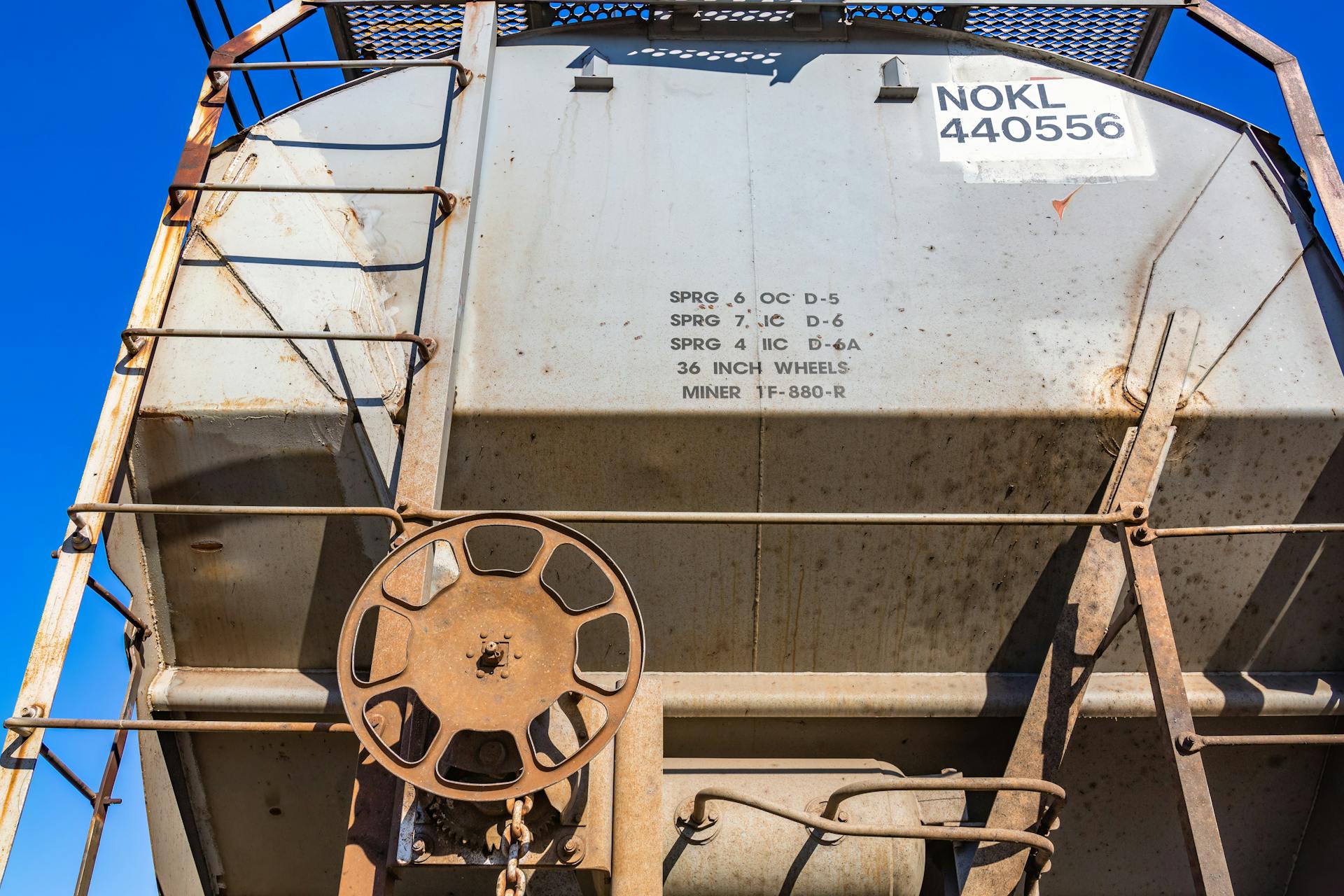
Depreciating equipment can be a complex process, but understanding the basics can help you navigate the system with ease. You can depreciate equipment over a period of 5 to 7 years, depending on its class.
The IRS has specific classes for different types of equipment, with Class Life ranging from 3 to 20 years. For example, a piece of equipment in Class Life 3 can be depreciated over 3 years, while one in Class Life 20 can be depreciated over 20 years.
To depreciate equipment, you'll need to calculate its cost basis, which includes the purchase price and any additional costs. This will determine how much you can depreciate each year.
What Is Depreciation?
Depreciation is a way for companies to spread out the cost of expensive assets like machinery and equipment over a period of years, matching expenses to related revenues in the same reporting period.
This method allows companies to write off an asset's value over time for tax purposes, which can be a huge benefit.
The cost of an asset is recorded on the balance sheet as a debit, which increases the asset account, and a credit, which reduces cash or increases accounts payable.
Depreciation is used to move the cost of an asset from the balance sheet to the income statement.
Here's how depreciation entries work:
- Debit to depreciation expense, which flows through to the income statement
- Credit to accumulated depreciation, which is reported on the balance sheet
Types of Depreciation Methods
There are several types of depreciation methods that can be used to allocate the cost of a tangible asset over its useful life. The most common methods include straight-line, double declining balance, units of production, and sum of years digits.
Straight-line depreciation is the simplest method, where the expense amount is the same every year over the useful life of the asset. For example, a piece of equipment that costs $25,000 with an estimated useful life of 8 years and a $0 salvage value would have a depreciation expense of $3,125 per year.
The sum-of-the-years-digits method is another accelerated depreciation method, where a higher expense is incurred in the early years and a lower expense in the latter years. This method requires setting up a schedule to calculate the depreciation expense for each year.
Here are the main types of depreciation methods:
- Straight-line
- Double declining balance
- Units of production
- Sum of years digits
These methods can be used to calculate depreciation expense and allocate the cost of an asset over its useful life.
Main Types of Methods
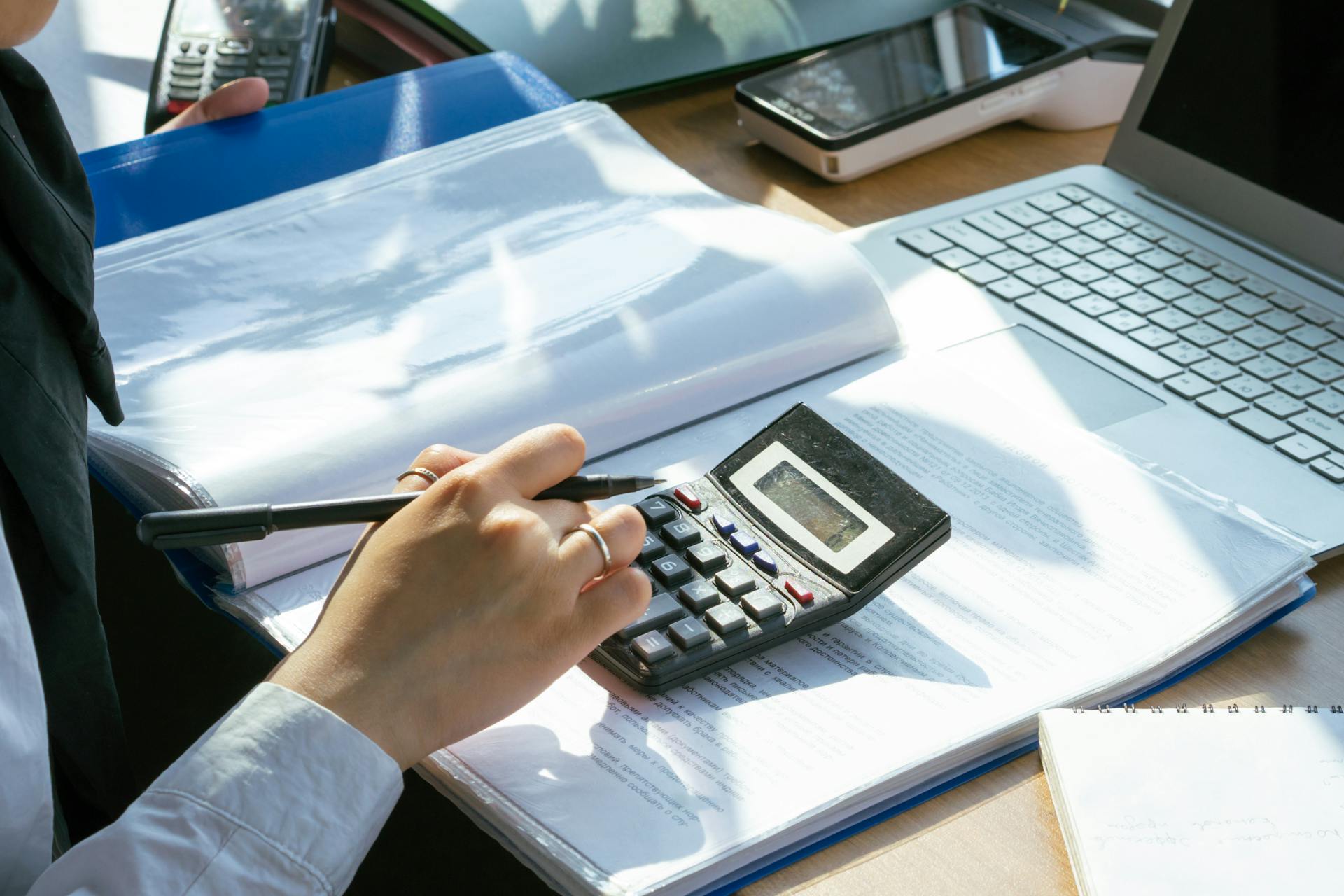
There are several types of depreciation methods, each with its own formula and application. The straight-line method is the most basic way to record depreciation, where an equal depreciation expense is incurred each year throughout the entire useful life of the asset.
The straight-line method is calculated by dividing the total depreciable amount by the total number of years of an asset's useful life. For example, a company buys a machine for $5,000 with a useful life of five years and a salvage value of $1,000. The annual depreciation amount would be $800 per year, which results in an annual depreciation rate of 20%.
One of the most commonly used depreciation methods is the straight-line method, which is easy to calculate and provides consistency in depreciation amounts over the years. The formula for straight-line depreciation is (Cost – Salvage value) / (Useful life), as seen in Example 3.
Another method is the double-declining balance method, which results in a larger amount expensed in the earlier years as opposed to the later years of an asset's useful life. This method reflects the fact that assets are typically more productive in their early years than in their later years.
Consider reading: What Is Prior Year Accumulated Depreciation
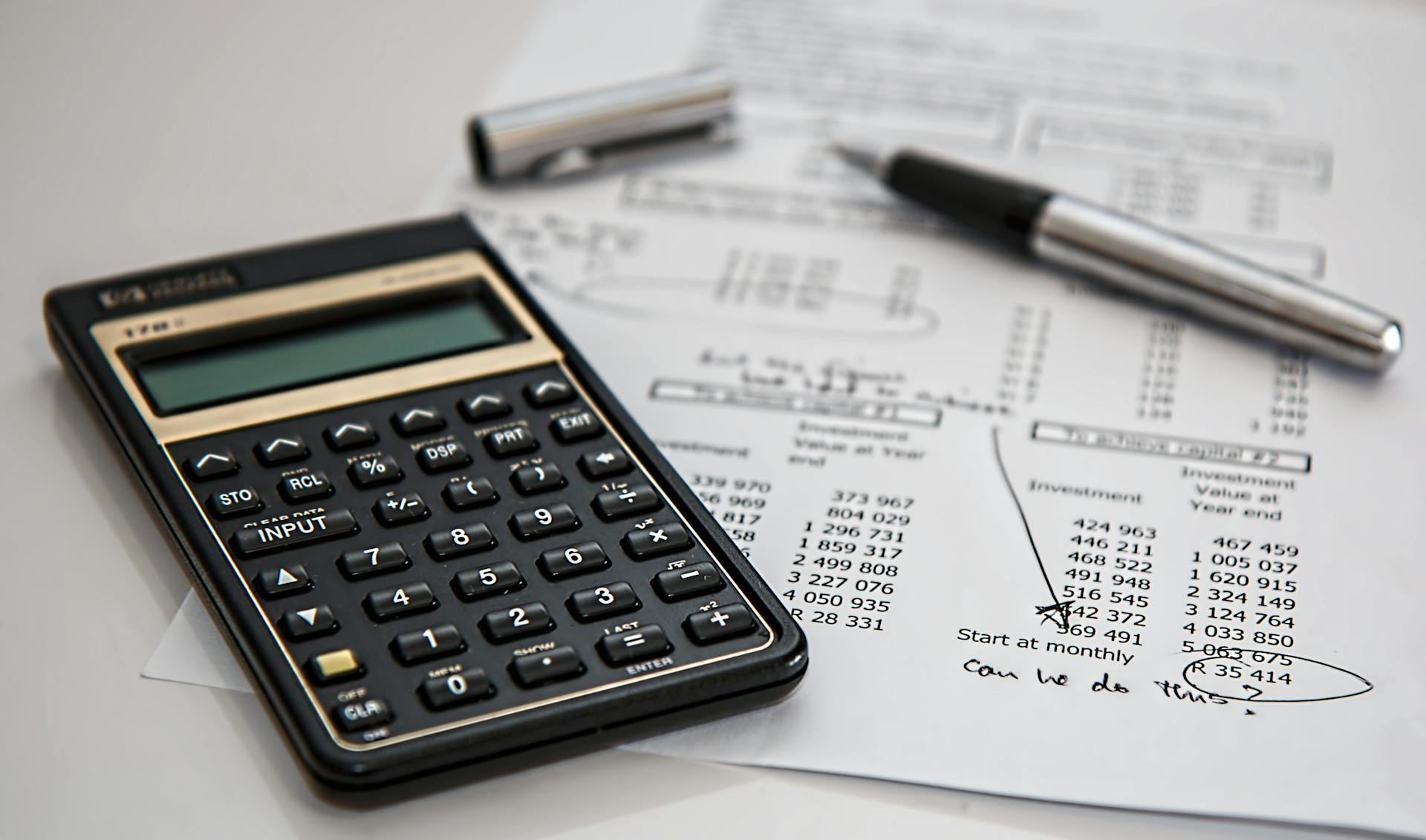
The double-declining balance method is calculated by multiplying the rate of depreciation by the beginning book value of the asset. For example, a piece of property, plant, and equipment (PP&E) costs $25,000, with an estimated useful life of 8 years and a $2,500 salvage value. The rate of depreciation is calculated as 25% (2 x 12.5%), and the depreciation expense for the first year would be $6,250.
Accelerated depreciation methods like the double-declining balance method and the sum-of-the-years-digits method are used to match the expense with the revenue earned from the asset. These methods result in a higher expense in the early years and a lower expense in the latter years of the asset's useful life.
The sum-of-the-years-digits method is another accelerated depreciation method, where a higher expense is incurred in the early years and a lower expense in the latter years of the asset's useful life. This method is calculated by dividing the remaining life of the asset by the sum of the years and then multiplying by the depreciating base.
Here is a comparison of the three main types of depreciation methods:
Production Method
The production method is a straightforward approach to calculating depreciation. It's based on the total number of units an asset will produce over its useful life.
This method is often used in manufacturing, where assets like machines are used to produce a large number of units. For example, a machine that costs $25,000 with a $0 salvage value and a total unit production of 100 million will depreciate $1,000 per million units produced.
The formula for the units-of-production method is Depreciation Expense = (Number of units produced / Life in number of units) x (Cost – Salvage value). This means that the depreciation expense is calculated by dividing the number of units produced by the total number of units the asset will produce, and then multiplying by the depreciable base, which is the purchase price minus the salvage value.
To illustrate this, let's consider a machine that costs $25,000 and will produce 100 million units over its useful life. If it produces 4 million units in the first quarter, the depreciation expense would be $1,000.
Suggestion: Financing Used Equipment
Calculating Depreciation
Calculating depreciation can seem like a daunting task, but it's actually quite straightforward. The most common methods are straight-line, declining balance, double-declining balance, sum-of-the-years' digits, and unit of production.
To calculate depreciation, you need to determine the asset's useful life and its initial cost. The useful life is the period of time the asset is expected to be used, and it varies depending on the type of asset. For example, a piece of equipment might have a useful life of 5 years.
The straight-line method is one of the simplest methods, where the depreciation expense is spread evenly over the asset's useful life. For instance, if an asset costs $10,000 and has a useful life of 5 years, the annual depreciation expense would be $2,000.
The depreciation rate is a percentage that represents the total amount depreciated each year. It's calculated by dividing the annual depreciation expense by the asset's initial cost. For example, if the annual depreciation expense is $2,000 and the asset's initial cost is $10,000, the depreciation rate would be 20%.
A fresh viewpoint: Is Straight Line Depreciation a Fixed Cost
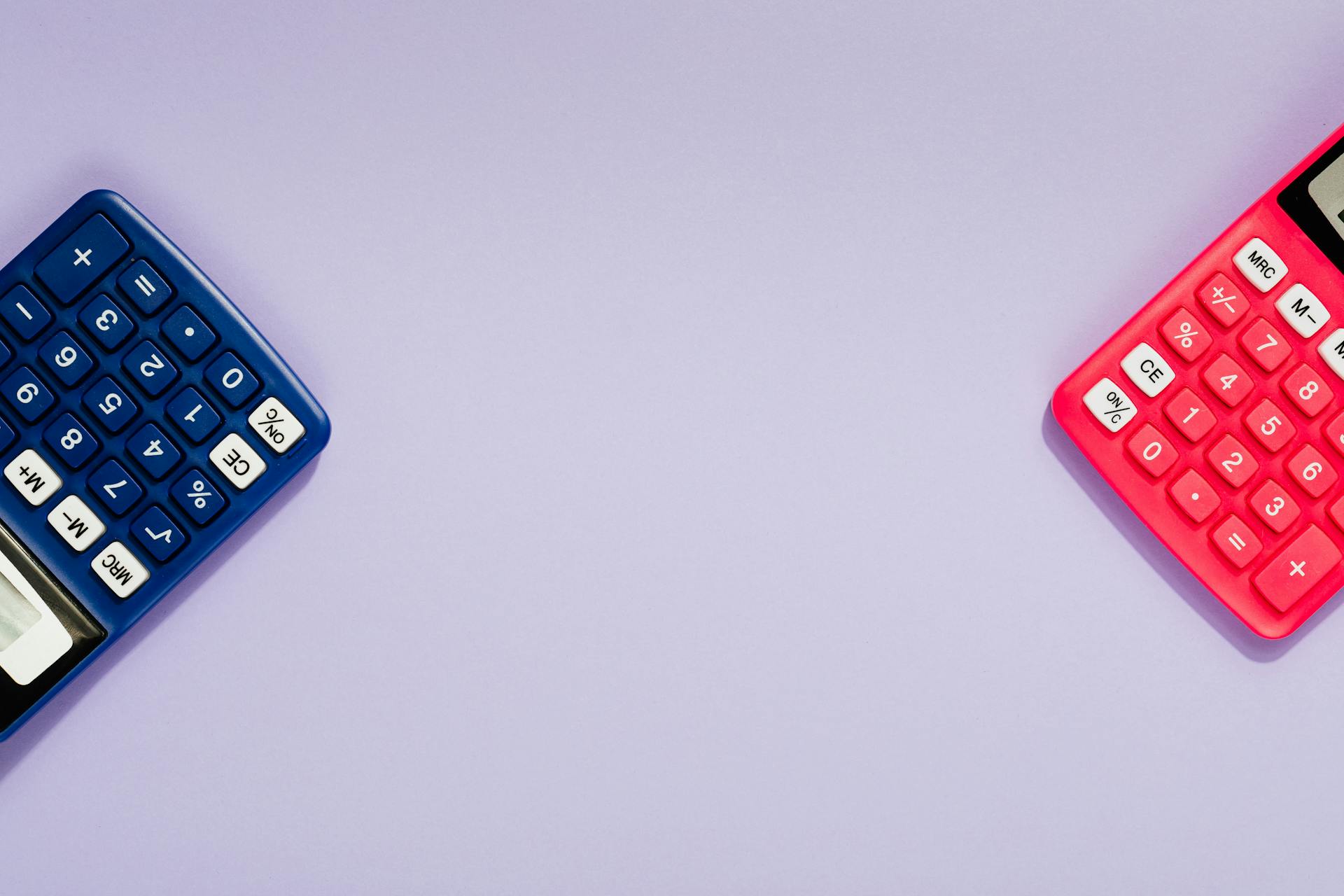
Here are the four main depreciation methods mentioned earlier, along with their formulas:
- Straight-line: (Initial Cost - Residual Value) / Useful Life
- Double declining balance: 2 x (Straight-line rate)
- Units of production: (Initial Cost - Accumulated Depreciation) / Total Units Produced
- Sum of years digits: (Initial Cost - Residual Value) x (Total Years - Current Year) / Total Years
These formulas might look intimidating, but they're actually quite simple once you understand the variables involved.
Depreciation Methods in Detail
There are four main types of depreciation methods: straight-line, double declining balance, units of production, and sum of years digits. Each method has its own formula and application.
The straight-line method is the simplest, with the expense amount being the same every year over the useful life of the asset. For example, a piece of equipment costing $25,000 with an 8-year useful life would have a depreciation expense of $3,125 per year.
The double declining balance method accelerates depreciation, with the expense amount increasing each year. The formula for this method is not explicitly stated, but a comparison table shows how it calculates depreciation along with straight-line and declining balance approaches.
The sum-of-the-years' digits method also allows for accelerated depreciation. It starts by combining all the digits of the expected life of the asset, then depreciates a portion of the depreciable base each year. For example, an asset with a 5-year life would have a depreciable base of $4,000, with $1,333 depreciated in the first year, $1,067 in the second year, and so on.
Here's a comparison of the four main depreciation methods:
Double-Declining Balance Method
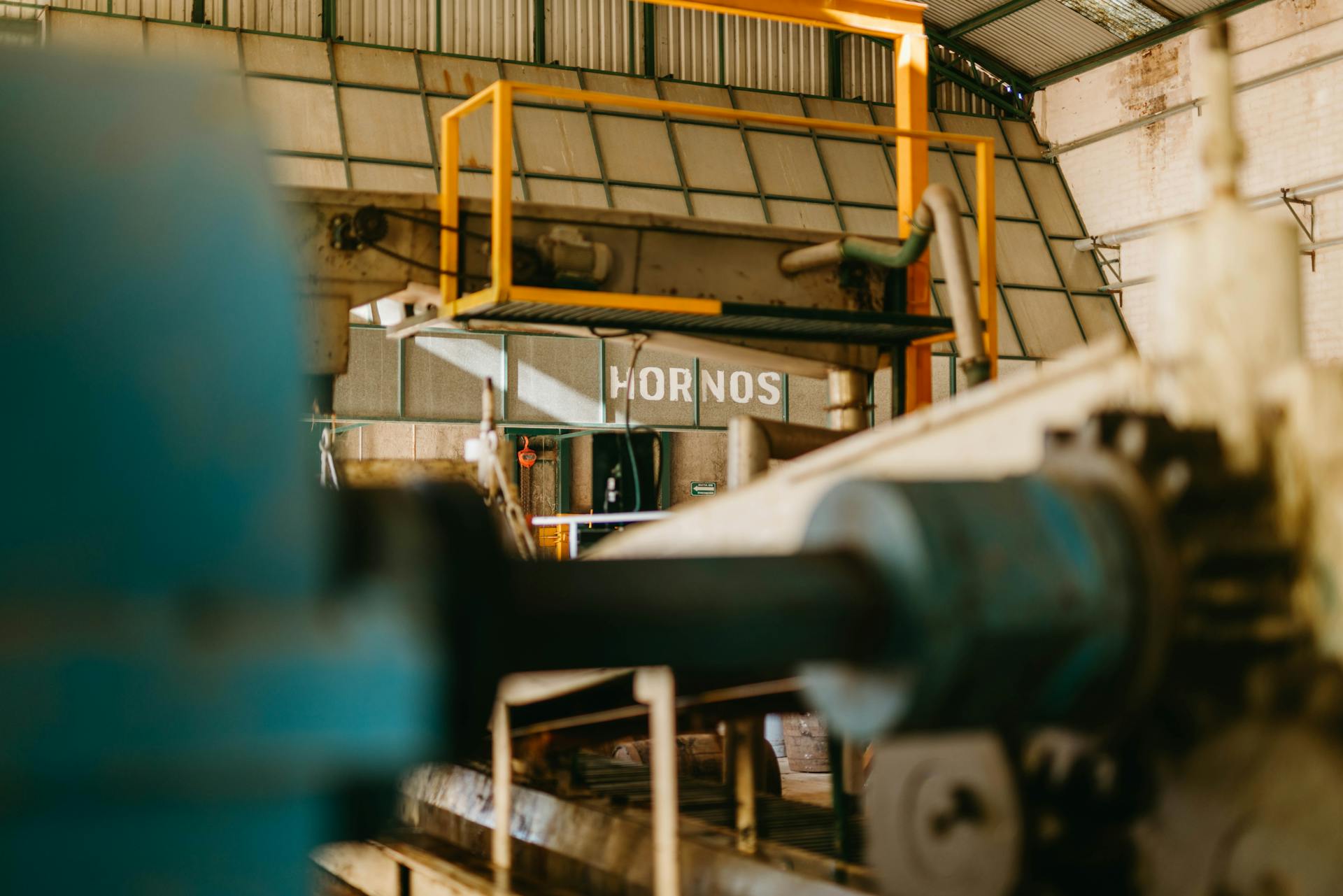
The double-declining balance method is a type of accelerated depreciation that results in a larger amount expensed in the earlier years as opposed to the later years of an asset's useful life. This method reflects the fact that assets are typically more productive in their early years than in their later years.
The double-declining balance method uses a depreciation formula that is 2x that of the straight-line expense method. This means that the depreciation factor is doubled, resulting in a higher depreciation expense in the early years.
To calculate the double-declining balance depreciation, you need to know the beginning book value of the asset, the rate of depreciation, and the salvage value. The rate of depreciation is calculated by multiplying the rate of depreciation by 2.
The formula for double-declining balance depreciation is: Periodic Depreciation Expense = Beginning book value x Rate of depreciation. For example, if the beginning book value is $25,000 and the rate of depreciation is 25%, the depreciation expense would be $6,250.
A unique perspective: Depreciation Method
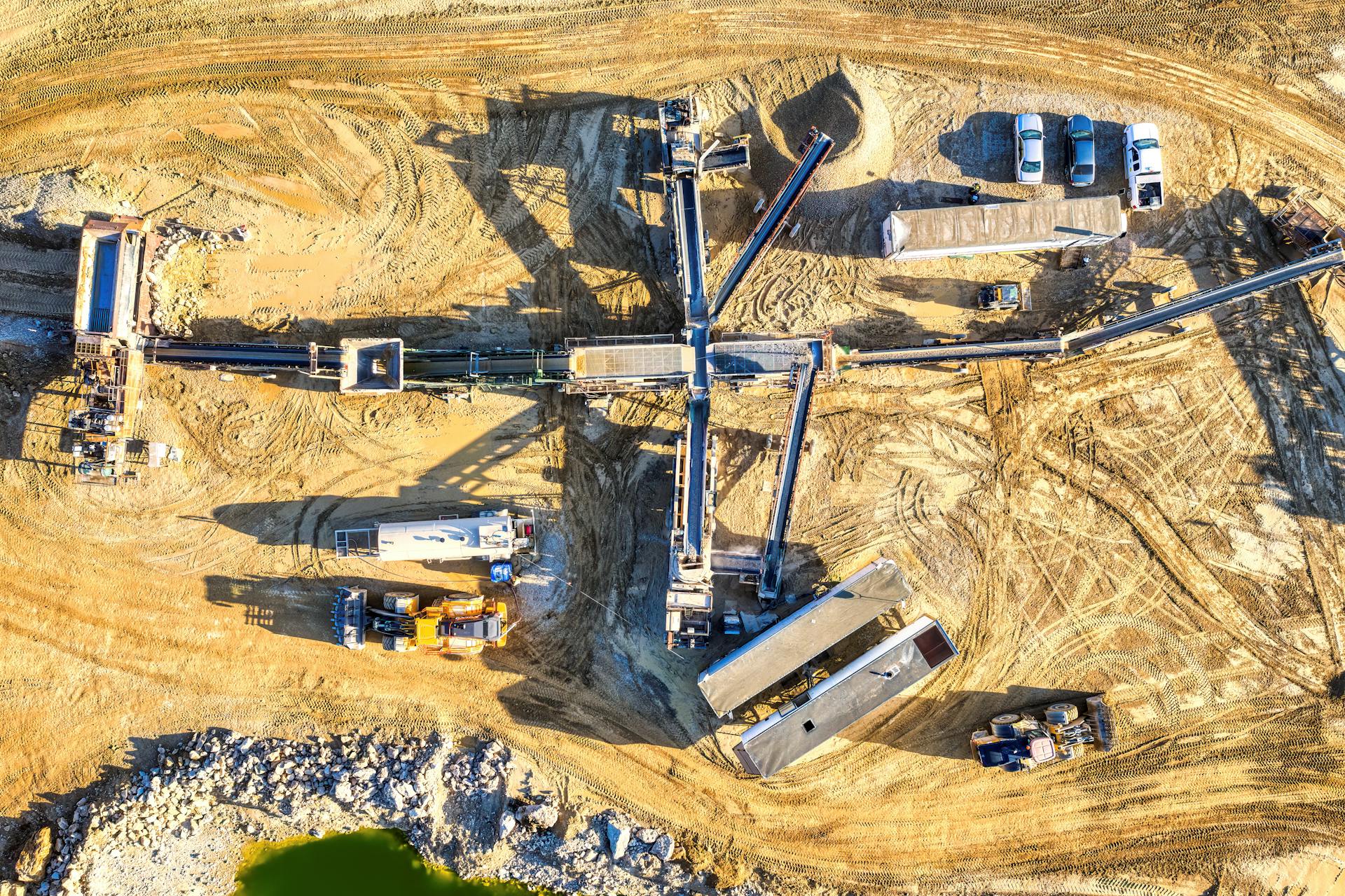
The double-declining balance method is often used because it results in a larger amount expensed in the earlier years, which can be beneficial for tax purposes.
Here is an example of how the double-declining balance method works:
As you can see from the example, the double-declining balance method results in a larger amount expensed in the earlier years, which can be beneficial for tax purposes.
Units of Production
The units-of-production depreciation method is a common approach used in manufacturing. It calculates depreciation expense based on the number of units produced by an asset over its useful life.
This method requires an estimate of the total units an asset will produce. Consider a machine that costs $25,000, with an estimated total unit production of 100 million and a $0 salvage value.
The formula for the units-of-production method is Depreciation Expense = (Number of units produced / Life in number of units) x (Cost – Salvage value). For example, during the first quarter of activity, the machine produced 4 million units, resulting in a depreciation expense of $1,000.
You might like: Depreciation Expense Straight Line Method
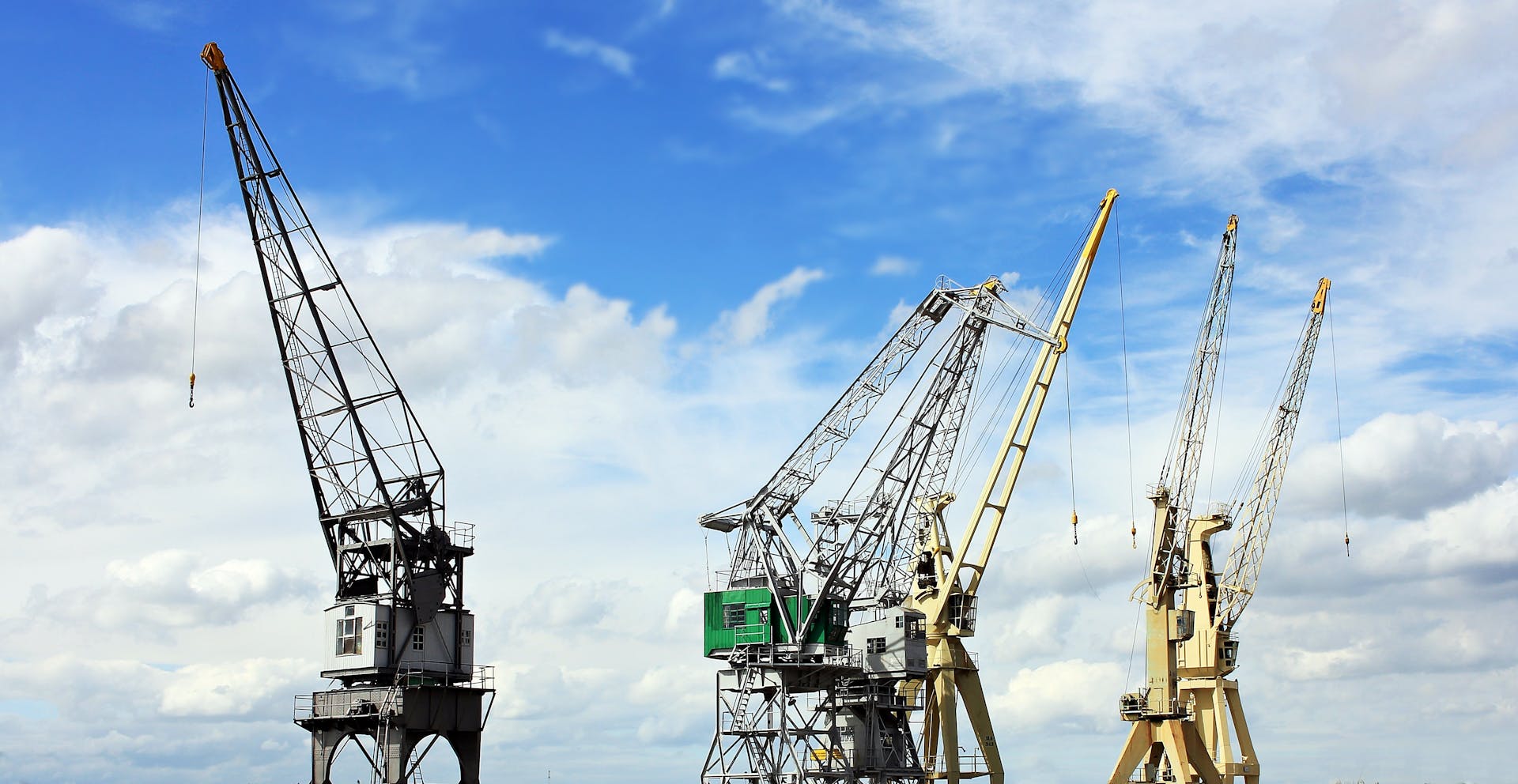
The depreciable base for this method is the purchase price minus salvage value. In the case of the machine, the depreciable base is $25,000.
Here's a quick summary of the units-of-production method:
- Requires an estimate of the total units an asset will produce
- Calculates depreciation expense based on the number of units produced
- Uses the formula: Depreciation Expense = (Number of units produced / Life in number of units) x (Cost – Salvage value)
- Depreciable base is the purchase price minus salvage value
Sum of Years' Digits
The Sum of Years' Digits method is a way to calculate depreciation expense by dividing the remaining life of an asset by the sum of the years' digits. This method allows for accelerated depreciation, with a higher expense in the early years and a lower expense in the latter years of the asset's useful life.
The formula for the Sum of Years' Digits method is Depreciation Expense = (Remaining life / Sum of the years digits) x (Cost – Salvage value). For example, if an asset has a cost of $25,000 and a salvage value of $0, and an estimated useful life of 8 years, the depreciation base would be $25,000.
The sum of the years' digits is calculated by adding up the numbers 1 through 8, which equals 36. The remaining life is then divided by the sum of the years' digits, resulting in a number that is multiplied by the depreciation base to determine the expense for that year.
A unique perspective: In Computing Depreciation Salvage Value Is

To illustrate this, let's consider the example of a piece of equipment with a cost of $25,000 and a salvage value of $0, and an estimated useful life of 8 years. The depreciation expense for the first year would be $5,556, which is calculated as 8/36 x $25,000.
Here's a breakdown of the depreciation expense for the first 5 years of the asset's life using the Sum of Years' Digits method:
As you can see, the depreciation expense is higher in the early years and lower in the latter years, which is a key characteristic of the Sum of Years' Digits method.
Depreciation Methods in Detail
Accumulated depreciation is a contra-asset account that reduces the overall value of a company's assets, and its natural balance is a credit.
The IRS publishes depreciation schedules indicating the total number of years an asset can be depreciated for tax purposes, depending on the type of asset.

Carrying value is the net of the asset account and the accumulated depreciation, which is what remains on the balance sheet after all depreciation is accounted for.
Salvage value is the carrying value that remains on the balance sheet after all depreciation is accounted for, and it's what a company expects to receive in exchange for the asset at the end of its useful life.
Salvage value can be based on past history of similar assets, a professional appraisal, or a percentage estimate of the value of the asset at the end of its useful life.
Accumulated depreciation on any given asset is its cumulative depreciation up to a single point in its life.
Related reading: Accumulated Depreciation Balance Sheet Classification
Taxes
Depreciation is not just a way to account for the loss of value in equipment, but also a tax strategy. Businesses can use depreciation to reduce their taxable income.
Under U.S. tax law, businesses can take a deduction for the cost of an asset, which reduces their taxable income. This is called asset depreciation.
For your interest: Depreciation Tax Shield Calculator
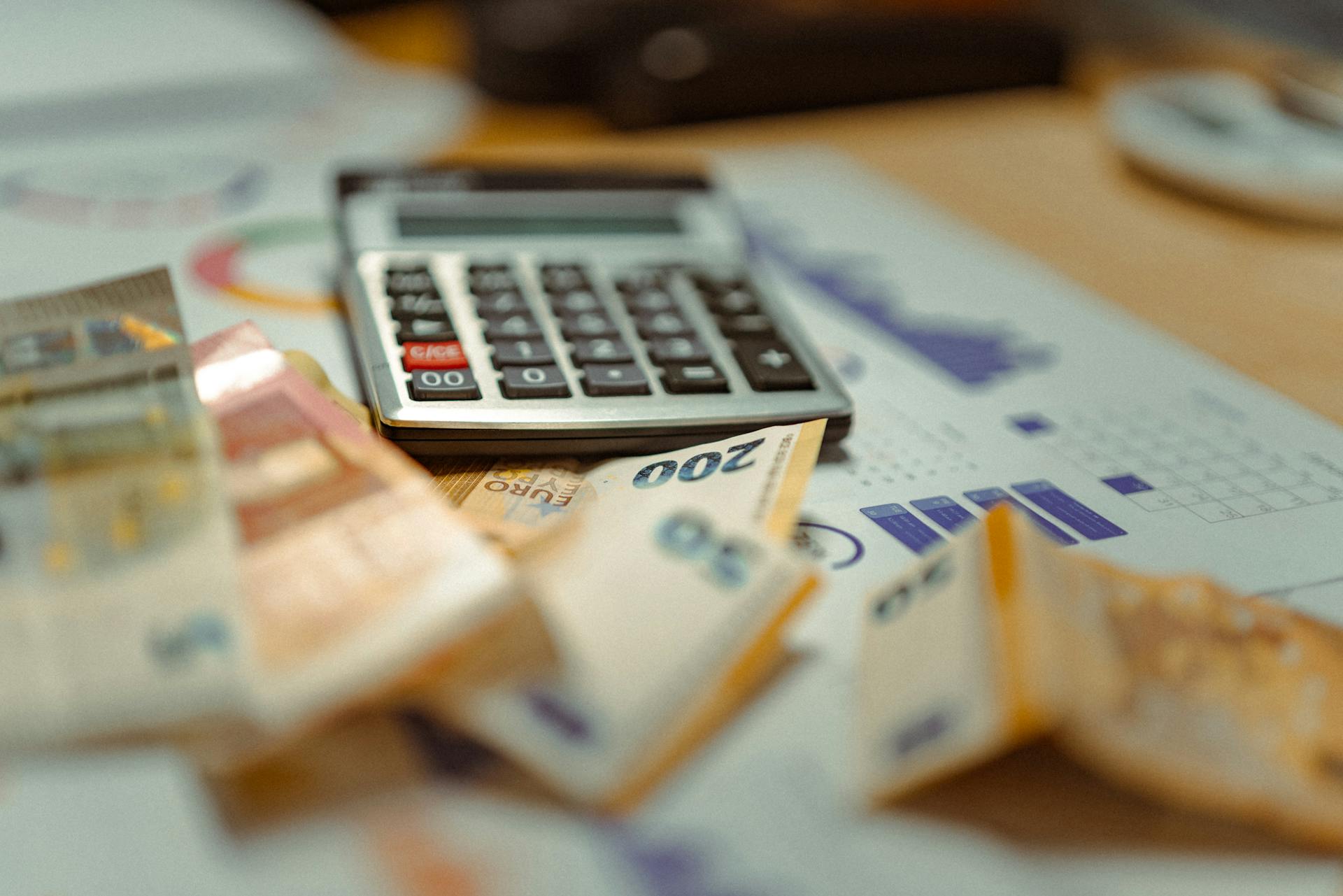
The IRS has specific requirements for what types of assets qualify for depreciation, and land is not eligible. Buildings and structures can be depreciated, but land is not.
To take advantage of the Section 179 expense deduction, the asset must be tangible personal property, including software. It must also be used in a trade or business, not just for personal use.
The maximum Section 179 deduction for 2024 is $1,220,000, but this begins to be phased out if total acquisitions exceed $3,050,000. If your business has no operating income, it might be better to use regular depreciation to pass the loss through to shareholders or partners.
Here are the key rules and limitations for Section 179 deductions:
- The asset must be tangible personal property, including software.
- The asset must be used in a trade or business.
- The deduction must be taken in the year the asset is put to use for business.
- The deduction cannot be more than earned income (net business income and wages) for the year.
Bonus Depreciation and Section 179
Bonus Depreciation and Section 179 are two tax deductions that can help businesses deduct purchasing costs for their property. The IRS requires most businesses to apply Section 179 first, followed by bonus depreciation.

The Section 179 expense limit is $1,220,000 for 2024, with a phase-out threshold of $3,050,000. Bonus depreciation, on the other hand, allows for an additional first-year depreciation allowance, with a 60% bonus depreciation rate for 2024, ramping down to 40% in 2025, 20% in 2026, and 0% in 2027.
Businesses can combine both deductions to offer the greatest possible benefits, but must follow the IRS rules. If you're eligible for both deductions, you can use Section 179 first, followed by bonus depreciation.
Here's a summary of how the two deductions work together:
Section 179 Deduction
The Section 179 deduction allows businesses to expense the full purchase price of qualifying equipment and/or software purchased during the tax year.
You can deduct the full purchase price on your business income tax return, but there are some limitations to keep in mind. The deduction limit was raised to $1 million in 2024, with a phase-out threshold of $2.5 million, including annual adjustments for inflation.
A unique perspective: What Is a Depreciation Tax Shield
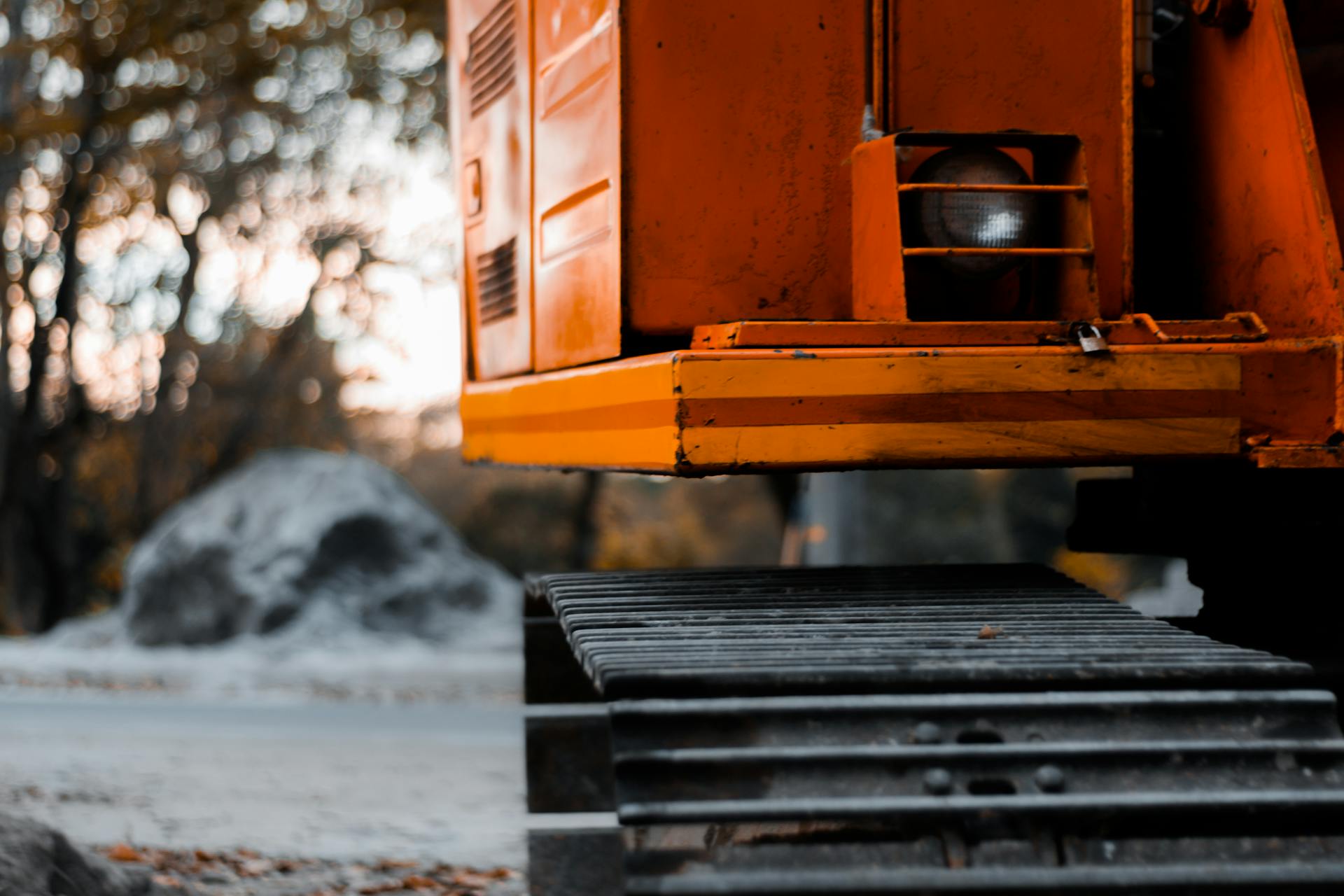
To qualify for the Section 179 deduction, the asset must be tangible personal property, including software, and must be used in a trade or business. Property used in a rental activity is generally not eligible.
Here are the key rules and limitations for 2024:
- The asset must be tangible personal property, including software (not real estate).
- It must be used in a trade or business (property used in a rental activity is generally not eligible).
- You must take the deduction in the year you start using the asset.
- The decision to use Section 179 must be made in the year the asset is put to use for business.
- The deduction cannot be more than your earned income (net business income and wages) for the year.
For 2024, the maximum Section 179 deduction is $1,220,000, and the deduction begins to be phased out if your total acquisitions are greater than $3,050,000.
What Is Bonus
Bonus depreciation is an additional first-year depreciation allowance that allows business taxpayers to deduct extra depreciation for the cost of qualifying business property. It's intended to encourage capital purchases by businesses of all sizes.
The IRS limits bonus depreciation to new equipment, but now allows for depreciation on used equipment, as long as it's the first use by the purchasing business. This change was made under the TCJA.
Bonus depreciation rules changed after September 27, 2017, allowing for 100% bonus "expensing" of assets that are new or used through 2022. This means businesses can deduct the full cost of these assets in the first year.
Explore further: All Property Plant and Equipment Assets Are Depreciated over Time
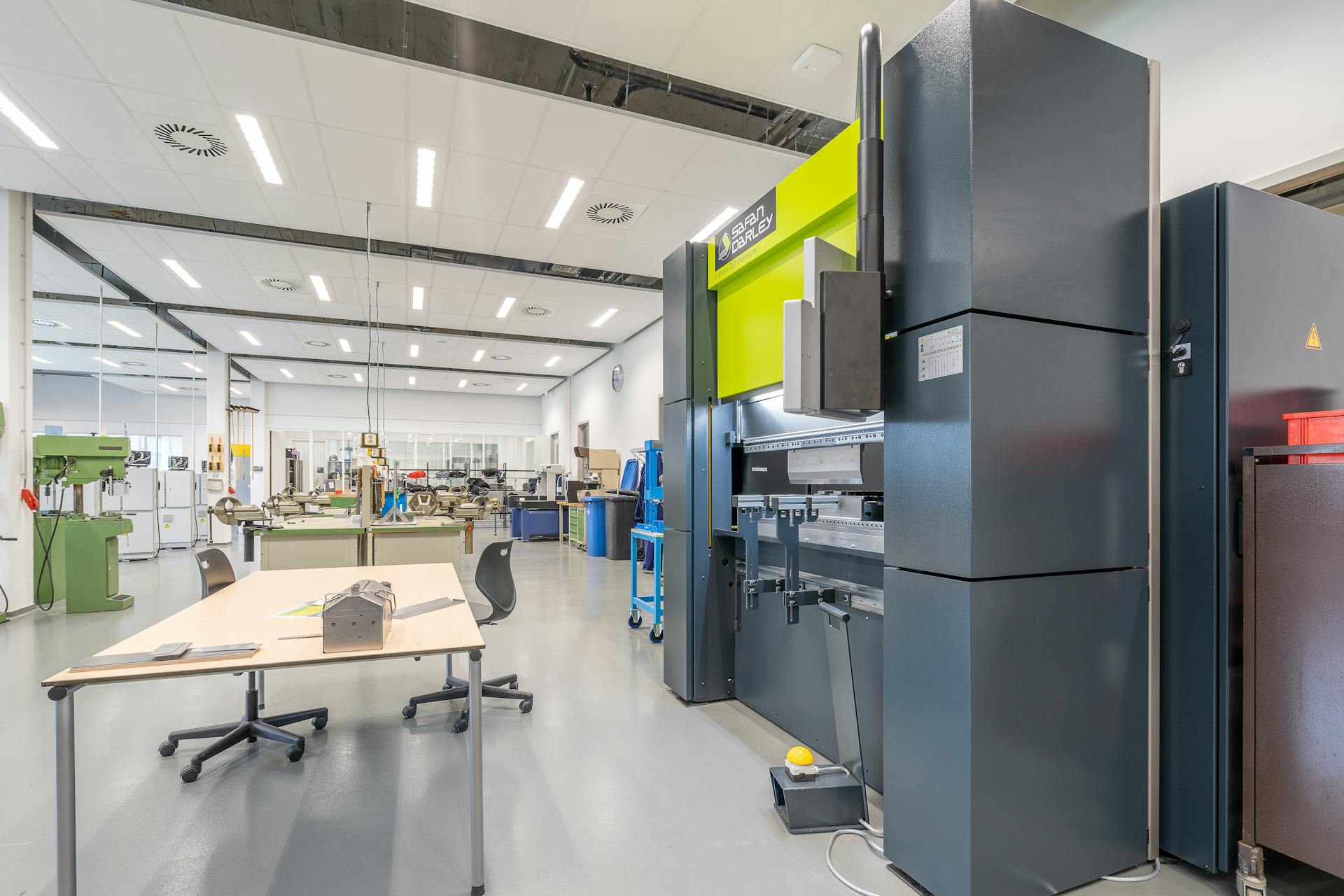
The percentage of bonus depreciation phases down in 2023 to 80%, 2024 to 60%, 2025 to 40%, and 2026 to 20%. After 2026, there is no further bonus depreciation.
Businesses can make an election to opt out of the new bonus depreciation rules and use 50% bonus first-year depreciation per the prior rules for the first tax year ending after September 27, 2017.
Readers also liked: How Much Do Boats Depreciate per Year
Accelerated
Accelerated depreciation is a popular method used by small businesses to take larger deductions in the first few years and smaller write-offs later. This method is commonly known as MACRS (Modified Accelerated Cost Recovery System).
MACRS depreciation starts off at 200% of the straight-line depreciation rate and then switches over to the straight-line method for the remaining depreciable balance. For example, if your business bought $2,000 worth of office furniture and started using it May 1, the first three years of MACRS depreciation deductions would be:
You don't have to take salvage into account, as you do with straight-line, and you generally use the "half-year convention", which means that the deduction that would otherwise be allowed for the first year is halved. The "midquarter convention" is used if you acquired more than 40% of your assets in the last three months of the year.
Accelerated depreciation may not be prudent for businesses that will earn more income as they grow, as it may give you the biggest deductions in the first years that you are in business. In such cases, the straight-line method may give you the best long-term tax benefit.
A different take: Straight Line Depreciation Chart
Frequently Asked Questions
Is equipment 5 or 7 year depreciation?
Equipment typically depreciates over 5 years, while office furniture depreciates over 7 years
What is the best depreciation method for equipment?
The straight-line depreciation method is often considered the best for equipment, as it allocates an equal amount of the cost to each year of its useful life. This method provides a consistent and predictable depreciation expense over time.
What is the depreciation rate for machinery?
The depreciation rate for certain types of machinery, such as motor buses, lorries, and taxis, as well as moulds used in rubber and plastic factories, is 30%. This rate applies to specific business uses, so it's essential to review the criteria for eligibility.
How do you record depreciation on machinery?
To record depreciation on machinery, debit the depreciation expense account and credit the accumulated depreciation contra asset account. Understanding the financial statement impact and depreciation method used is also crucial for accurate accounting.
What assets are depreciated over 7 years?
Office furniture is depreciated over a 7-year period, allowing businesses to claim depreciation deductions accordingly
Sources
- https://www.usbank.com/financialiq/improve-your-operations/industry-insights/Maximizing-your-deductions-Section-179-and-Bonus-Depreciation.html
- https://turbotax.intuit.com/tax-tips/small-business-taxes/depreciation-of-business-assets/L4OStLQEL
- https://corporatefinanceinstitute.com/resources/accounting/types-depreciation-methods/
- https://www.investopedia.com/terms/d/depreciation.asp
- http://extension.msstate.edu/publications/understanding-farm-asset-depreciation-and-tax-implications
Featured Images: pexels.com

